The OnePlus 7 Pro Review: Outstanding Performance & Screen, Adequate Everything Else
by Andrei Frumusanu on June 19, 2019 12:00 PM EST- Posted in
- Mobile
- Smartphones
- OnePlus
- OnePlus 7 Pro
Camera - Low Light Evaluation
One of the purported advantages of the IMX586 is that it’s able to achieve 4:1 pixel binning in its 12MP capture mode. This means that in effect the pixel pitch in terms of light capture ability ends up at 1.6µm – which is an increase and advantage over last year’s 6T’s 1.22µm module and even 1.4µm modules from the traditional sensor size crowd such as Samsung, LG, Apple and Google.
Again, what will be interesting in this comparison from a competitive stand-point is how the Honor 20 Pro and Oppo Reno stand up against the OnePlus 7 Pro as we can directly analyse whose software processing algorithms are superior.
As aforementioned, the OP7Pro night shots were done on the new 9.7.7 firmware which includes a new update and improved Nightscape low-light capture mode, which did improve things a lot compared to the release firmware.
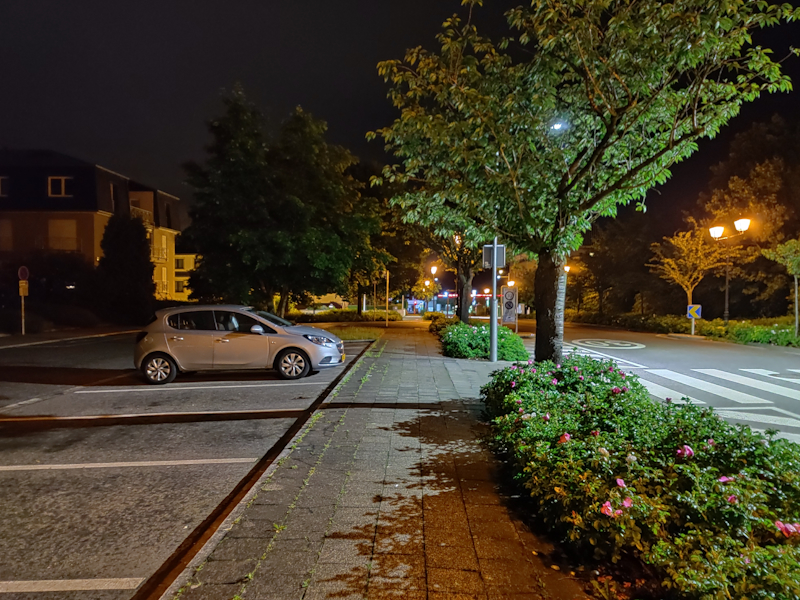
[ OnePlus 7 Pro ] - [ OnePlus 6T ]
[ S10+ (E) ] - [ S10+ (S) ]
[ P30 Pro ] - [ Honor 20 Pro ]
[ G8 ] - [ Oppo Reno ]
[ Pixel 3 ] - [ Pixel 3a ] - [ iPhone XS ]
In the auto mode, I have a very hard time to understand what’s happening to the OP7Pro here. The results are quite outright terrible and the phone is posting significantly washed out textures compared to what the Oppo Reno and the H20Pro are able to get. OnePlus here prioritised too much on having a longer exposure rather than higher ISO levels, so even though both the OP7Pro and the Reno both have similar resulting brightness levels, the Reno is massively sharper. The H20Pro is also far ahead, but granted the phone has a big advantage with its f/1.4 aperture lens. In Auto mode this is actually a downgrade from what the 6T was able to achieve.
Turning on Night mode notably improves things, however it’s not sufficient to compete with the top low-light performers. The Reno’s Night mode, while a bit flat, does significantly better in terms of detail and is a lot sharper. Google, Huawei and now Samsung remain as the top perfomers.
The OP7Pro’s wide-angle here was just a disaster and it didn’t focus correctly. Unfortunately OnePlus doesn’t yet offer Nightscape mode for the wide-angle module, and thus it’s far behind Huawei and Samsung in such shots.
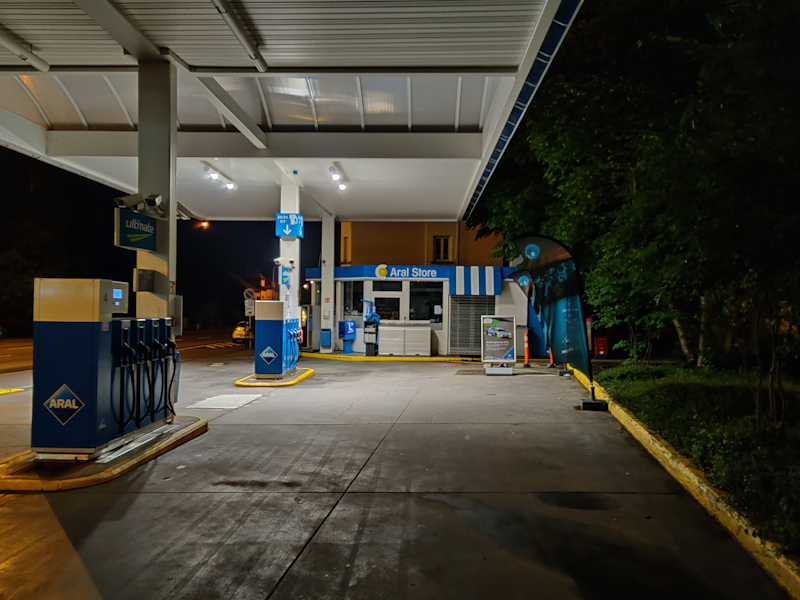
[ OnePlus 7 Pro ] - [ OnePlus 6T ]
[ S10+ (E) ] - [ S10+ (S) ]
[ P30 Pro ] - [ Honor 20 Pro ]
[ G8 ] - [ Oppo Reno ]
[ Pixel 3 ] - [ Pixel 3a ] - [ iPhone XS ]
Here while OnePlus was able to improve on the sometimes comical results of the 6T’s Nightscape processing as seen here, it’s still only good enough for a thumbnail as under closer inspection we see that the phone continues to lag behind other vendors. As seen in the 7 shots, whilst the night mode does brighten things up, it actually severely blurs out elements that were well lit.
The wide-angle continues to be uncompetitive.
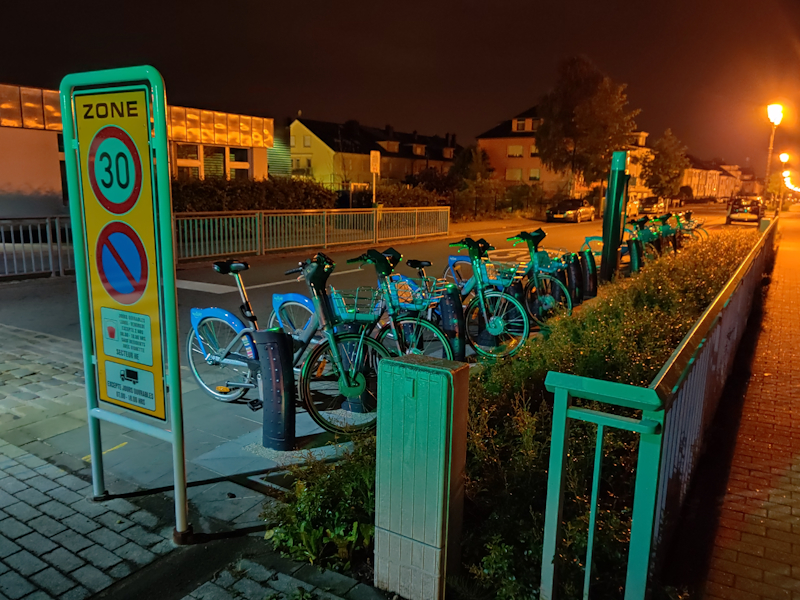
[ OnePlus 7 Pro ] - [ OnePlus 6T ]
[ S10+ (E) ] - [ S10+ (S) ]
[ P30 Pro ] - [ Honor 20 Pro ]
[ G8 ] - [ Oppo Reno ]
[ Pixel 3 ] - [ Pixel 3a ] - [ iPhone XS ]
When going dark and darker in scenes, we actually see that sometimes the Nightscape mode does improve some aspects, but again there’s a big compromise, as seen in this shot the text on the traffic sign is completely blurred out, while it was reasonably good in the auto mode.
The wide-angle is bad.
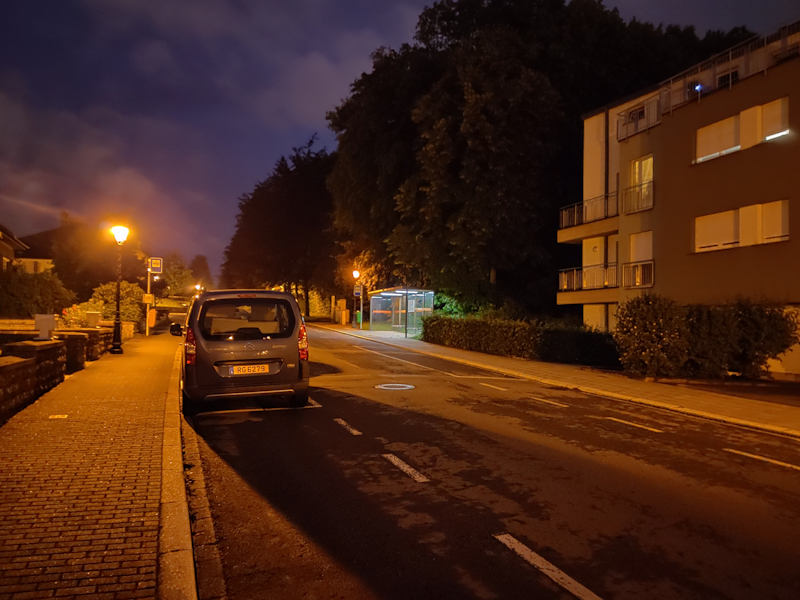
[ OnePlus 7 Pro ] - [ OnePlus 6T ]
[ S10+ (E) ] - [ S10+ (S) ]
[ P30 Pro ] - [ Honor 20 Pro ]
[ G8 ] - [ Oppo Reno ]
[ Pixel 3 ] - [ Pixel 3a ] - [ iPhone XS ]
We continue with bad results; here yet again while the Nightscape mode is able to brighten things up a lot, we again see large degradations in the better exposed parts of the scene such as the pavement.
The wide-angle is having a hard time to capture much.

[ OnePlus 7 Pro ] - [ OnePlus 6T ]
[ S10+ (E) ] - [ S10+ (S) ]
[ P30 Pro ] - [ Honor 20 Pro ]
[ G8 ] - [ Oppo Reno ]
[ Pixel 3 ] - [ Pixel 3a ] - [ iPhone XS ]
It’s only in effectively uniformly dark scenes where one can say the Nightscape mode is actually a no-compromise improvement over the auto mode. Here the OnePlus 7 Pro showcases much better results than the previous generation 6T.
Unfortunately that’s not enough for the latest generation phones as well as the new software updates from the competition. While the 7Pro is competitive against the Snapdragon S10 with the original low-light mode, Samsung’s new Night mode as seen in the Exynos shot above is leaps ahead of OnePlus.
The wide-angle is effectively blind here.
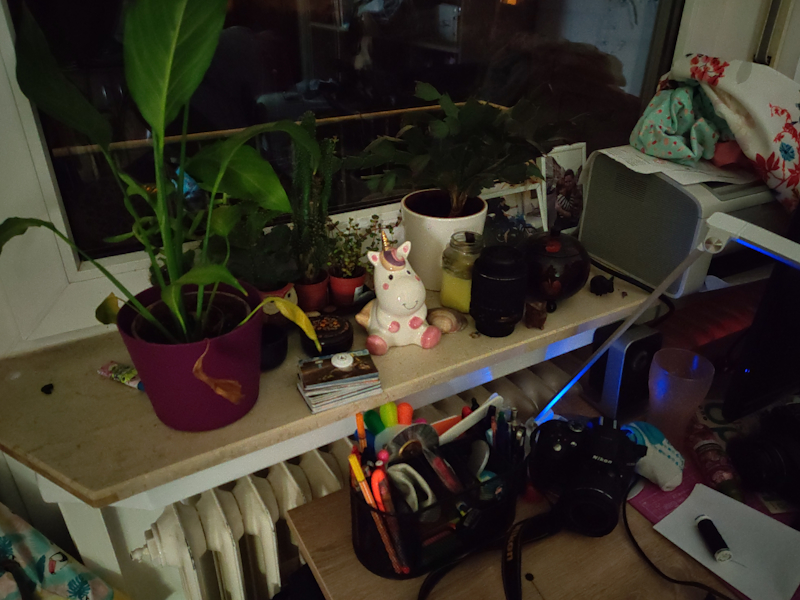
[ OnePlus 7 Pro ] - [ OnePlus 6T ]
[ S10+ (E) ] - [ S10+ (S) ]
[ P30 Pro ] - [ Honor 20 Pro ]
[ G8 ] - [ Oppo Reno ]
[ Pixel 3 ] - [ Pixel 3a ] - [ iPhone XS ]
This last scene largely mimics the last shots, again while the OP7Pro would have been competitive against the S10’s original low-light mode, it can’t compete against the new improved variant.
Overall Low-Light Capture Conclusion – A Big Disappointment
It’s very much unfortunate that OnePlus wasn’t able to invest more efforts into its computational photography. Even with the very latest firmware update we’ve used here the phone simply has massive issues under low light. There are some shots we’ve seen today which do point out what some of the issues are with OnePlus Nightscape mode: Unlike Huawei’s, Google’s and now Samsung’s Night modes, it doesn’t just selectively stack areas for photo exposures, and instead does the whole frame, and it’s not able to correctly stack sections to as to avoid blurring. In effect the Nightscape mode should be good on a tri-pod, but it’s not competitive in hand-held mode.
This is solely something that OnePlus has to fix, as Honor and Oppo showcase it’s possible to achieve good results with the very same hardware sensor.










91 Comments
View All Comments
s.yu - Thursday, June 20, 2019 - link
Indeed I'd rather have the entire front camera axed than the 3.5mm port!rohitghali - Sunday, October 13, 2019 - link
Me too...patel21 - Thursday, June 20, 2019 - link
I would love to see in depth review of Asus Zenfone 6. The real flagship killer at $500.Andre please try to sample it, as the effect of LCD and SD855 on a 5000 mah battery would be interesting to see.
1_rick - Thursday, June 20, 2019 - link
True. The Mi 9 is missing a few bands for some US carriers, though.1_rick - Thursday, June 20, 2019 - link
Really? Bezel-less curved front, glass back, flagship CPU, all those camera lenses, nearly a 7 inch screen, and you don't want to call it premium? If we can't call a 6.67" phone with flagship design and specs premium, then the word means "Samsung and Apple's most expensive phones" and is effectively useless.flyingpants265 - Sunday, June 23, 2019 - link
IMO Samsung went the extra mile this time.zodiacfml - Thursday, June 20, 2019 - link
The main feature will be beaten by the ASUS ROG Phone 2 at 120 Hz at the same price.mobutu - Thursday, June 20, 2019 - link
please stop using flagship killer in relation with the oneplus, there's not such thing anymore.actual flagship killer is k20pro
wr3zzz - Thursday, June 20, 2019 - link
I noticed stuttered scrolling in certain apps with my OP7P, namely some news apps. Is it due to apps not optimized for 90hz or just Oneplus did a poor job switching between 60hz and 90hz (my OP7P is set to 90hz)?silverblue - Thursday, June 20, 2019 - link
Sorry in advance if this sounds like I'm being picky, but being an HTC owner, it's a little disappointing not to see a single HTC phone in the benchmarks. I'm due an upgrade in four months so being able to see comparative performance would've been very useful.I suppose it's because they weren't reviewed. :(